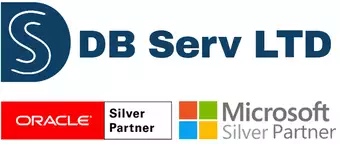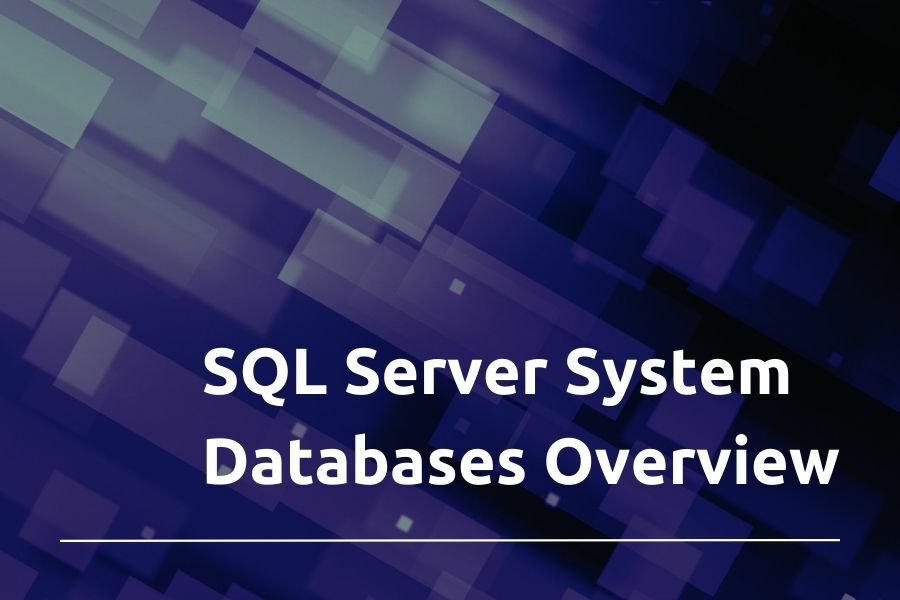The SQL Server infrastructure comprises several levels and types of databases. Generally, they can be divided into system databases in SQL Server and user DBs.
On a single SQL Server instance, you can host up to 32,767 DBs, but it’s worth noting that the server has a set of limitations, primarily concerning cache, resources, traffic, and so forth.
Each System Cluster database has its own peculiarities, purpose, templates, and behavior. Additionally, each database is assigned a unique ID, which serves as a query router between DBMS and databases of each type.
Today, let’s briefly look at DBs that belong to the class of system databases in SQL Server.
Understanding SQL Server System Databases
In brief, system databases in SQL Server are DBs that manage the server and related objects, namely stored data, scripts, and controlled DBs.
They are installed alongside SQL Server and let you manage the server. Typically, they contain system information, such as databases, reports, schedules, tasks, linked servers, etc.
System databases in SQL Server consist of the following DBs:
● master Database
● model Database
● msdb Database
● tempdb Database
Separately, we can highlight ResourceDB, where resources and system objects that are part of SQL Server are stored. This DB is also called “invisible” since it usually does not appear in the structure.
Let’s delve into the details of all types of databases in SQL Server.
Roles and Functions of Each System Database
In the hierarchy and schemas of SQL Server, each system database has a distinct role. They utilize different datasets and are governed by different rules. However, they all serve as the foundation for creating programs for users and managing the instance.
Thus, all the types of DBs mentioned in the article are critically important for the proper functioning of SQL Server. Even without one, the system will not work correctly, or some default capabilities in this solution may be lost.
Let’s move on to the review of each of the system DBs.
master Database
This is a crucial database without which the server will not function at all. It simply won’t start. This is because system-level information is embedded in this system database in SQL Server.
➡️ Typically, this DB contains the following types of data:
➡️ System configuration settings.
➡️ Information about linked servers.
➡️ Locations of user database files.
➡️ Information about all other objects created in SQL Server:
● Databases
● Stored procedures
● Tables
➡️ Login accounts.
➡️ Endpoints.
It is crucial to constantly create and update a backup of this DB. Otherwise, in case of its corruption, the server loses its functionality.
model Database
This is a template for SQL Server system databases and user DBs. That is, after configuring the model, each subsequent DB will be created with the parameters entered into this database.
If changes are made to the source, for example, a certain parameter is changed, they are automatically applied to the child databases created from this template.
By the way, tempdb is also generated from the model during each server startup. Therefore, this database is critically necessary for the system’s proper functioning.
msdb Database
This is a database used by SQL Agent for scheduling tasks and notifications, as well as archiving event and activity history directly related to the database. This same database allows data manipulation for automation, transaction logging, replication, BD mail, etc.
It also contains data about the backup and restoration of all system DBs.
tempdb Database
A temporary DB that contains duplicates of all key SQL system databases and allows working with them from an isolated environment. Typically, temporary tables or databases created by users appear here. It also stores intermediate results during query processing, transactions, etc.
The database is created automatically during each SQL Server startup and is deleted (cleared) when turned off or restarted.
Management and Optimization
Your system DBs are critical for server operation, so ensuring their security, optimization, and efficient management is essential.
For an optimal experience with SQL Server, follow these recommendations:
✅ Always back up your databases and keep copies for quick recovery.
✅ Set permissions for different user groups to limit external impact on critical data.
✅ Actively test DBs and DBMS overall to promptly identify and resolve issues.
✅ Create a logical and, if possible, anatomic structure for databases.
✅ Keep data organized and ensure sufficient space for productive system operation.
Also, always respond to issues promptly to avoid genuinely critical scenarios.
Troubleshooting Common Issues
If you encounter problems with SQL Server System Databases, try a simple algorithm to localize them before delving deep.
Address issues with the program.
1. Resolve OS issues.
2. Fixnetwork issues.
3. Address high CPU usage issues in SQL Server.
4. Resolve performance-slowing I/O bottlenecks.
5. Address memory issues.
6. Resolve blocking issues.
7. Fix scheduler issues.
8. Find resource-intensive Profiler or XEvent Traces.
You can also find tips on the official system resource or entrust server maintenance to professionals.
Conclusion
From our material, you’ve learned about main types of system databases used in SQL Server and their specifics. Namely, the master Database, model Database, msdb Database, tempdb Database, and briefly about ResourcesDB. Use this knowledge to start working with the system and build efficient and logical databases.
If you encounter problems or seek experts to assist you, congratulations, you’re heading in the right direction. Reach out to the DBServ team for effective and quality solutions to meet the IT needs of your business.

